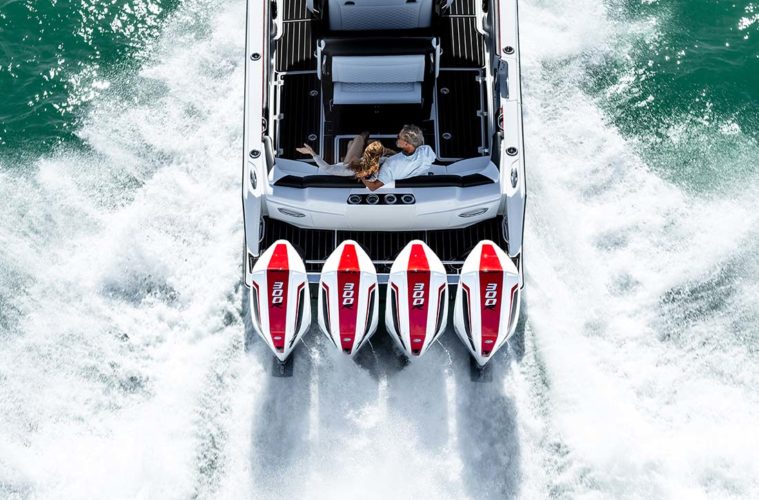Photographs by Tom King
The Mercury Racing 300R was designed for boaters with the need for speed.
“It has features to deliver that high-performance boating experience,” says Steve Miller, director of sales, marketing and service at Mercury Racing
The 300R is Mercury Racing’s newest contender in an effort to satisfy as many niche markets as possible—and offers a higher top-end speed than any other engine in the 300 series. That’s because it uses the same advanced midsection (AMS) as the uber-fast 450R.
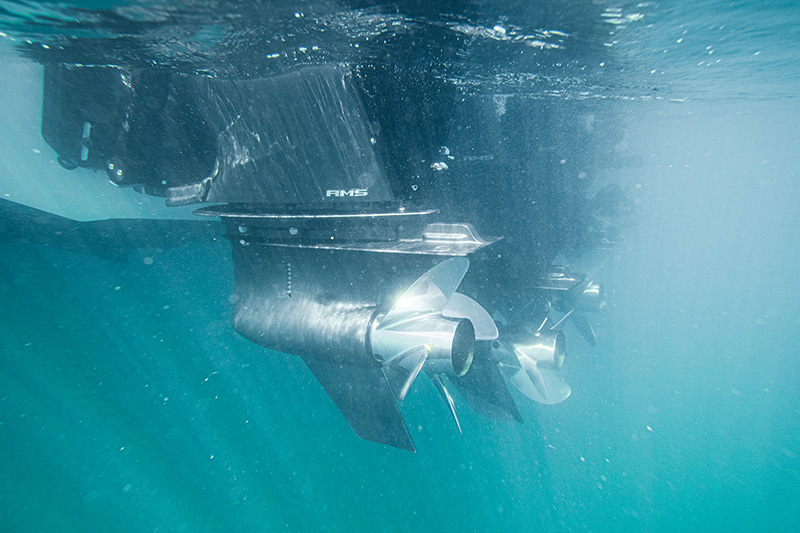

“You get stiffer performance mounts and guide plates that work together to stabilize the engine for drivability and handling at higher speeds,” Miller says. “It’s about much more than just power—it maximizes the driving experience.”
With the new 300R, Mercury Racing is delivering performance potential to customers who might not otherwise have the appetite or financial wherewithal for a larger boat. That means a manufacturer’s suggested retail price from $30,000 to $37,000 for the 300R, depending on color and gearcase, compared to $55,000 to $65,000 for the 450R.
“Upgrades to the 300R include performance intake cams, a unique short runner intake manifold, an oil cooler and a performance calibration with a higher full-throttle rpm range,” Miller says. “All of these features combine to increase significantly the overall horsepower output.”
The naturally aspirated 300R is based on a 4.6L V-8 four-stroke powerhead, with four-valve cylinder heads and a double overhead camshaft valve train—a one-of-a-kind Mercury block. To extract maximum performance, the 300R is equipped with a performance-optimized, engine-control unity calibration that increases the wide-open-throttle range to 6400 rpm. The 300R is designed to make full power on 87-octane (R+M/2 or 90 RON) fuel.
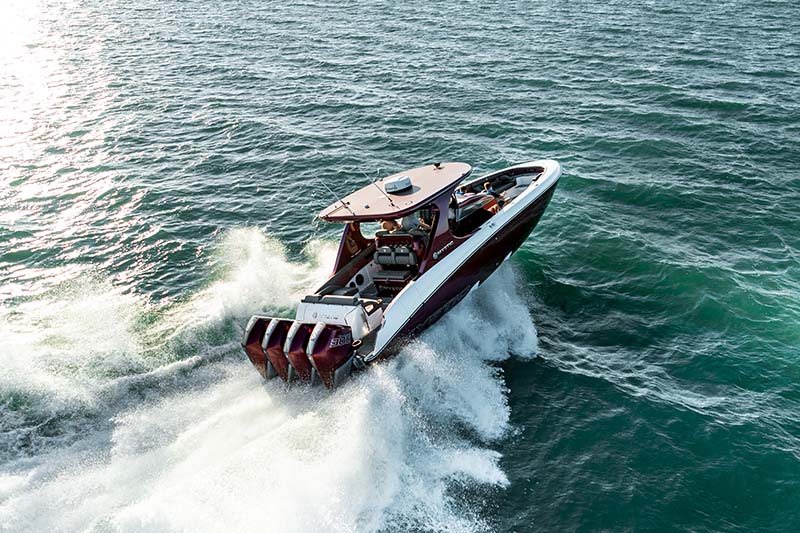

There are two gearcase options for the 300R, each of them boat-specific. “A Racing 5.44 HD runs in a more submerged state and is suitable for boats up to about 85 mph,” he says. “The Sport Master runs in a more surfaced state and is designed for boats running in excess of 85 mph to well over 100 mph, and requiring little to no positive trim-out.”
The 300R has a115-amp alternator which translates to 35 percent higher battery-charging capability than the 85-amps on the standard 300, and other features like an adaptive speed control that behaves like cruise control on a motor vehicle. “It will keep rpms in a turn,” says Stuart Hailey, Mercury Racing’s general manager.
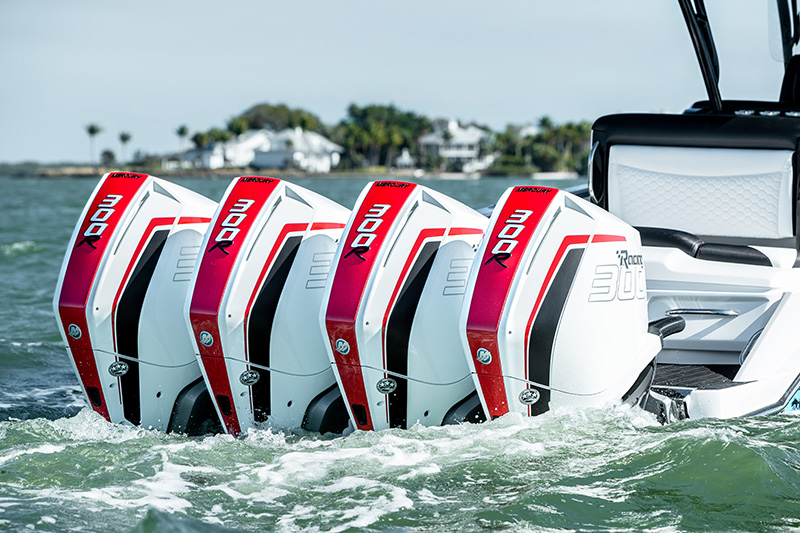

Hailey brought eight years of experience in systems integration to Mercury from General Dynamics and Lockheed—including work on F-16 and F-22 aircraft. He was involved in creating Mercury’s product development course, before he was named Mercury Racing’s general manager three years ago. “We fundamentally changed how we researched consumer needs, and converted those needs into attributes that the engineering team could deliver,” he says.
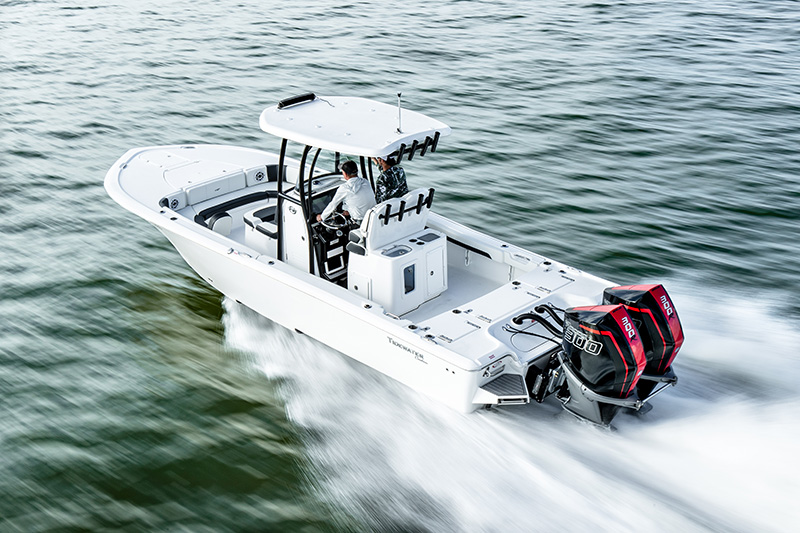

Thus the 300R, for a group that Hailey calls the “go-fast” crowd. “The packages should be especially appealing for use on high-performance, stepped-bottom, center console boats, catamarans and other high-speed applications,” he says. “It’s a better fit on many of these transoms, and permits more tilt range within narrow motor walls.”
For a boat like the stepped-bottom 2700 Carolina Bay—Tidewater Boat’s flagship in its bay line—a steel bar connects two 300R engines. “That’s unique to Mercury,” Miller says. “It’s advantageous and a feature this AMS midsection lets us offer.”
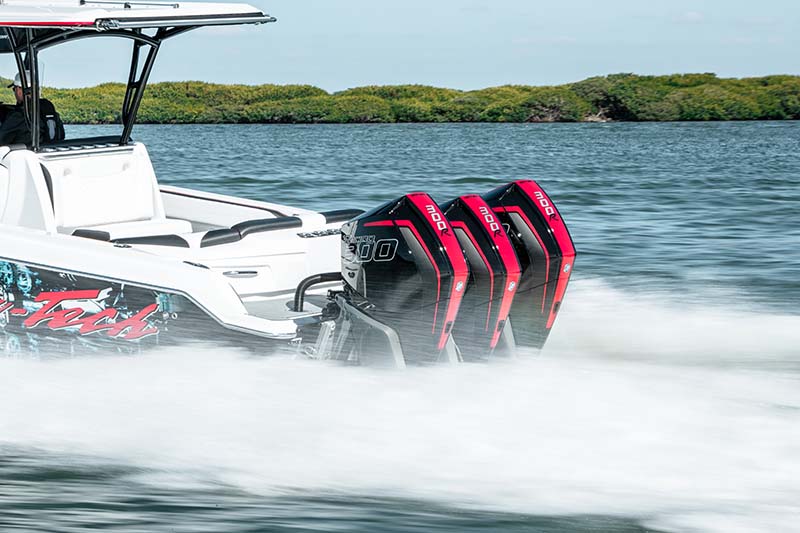

Tidewater’s founder, Jimmy Metts, has been outfitting his boats with the 300 line for years. He took a dual-300R-powered 2700 Carolina Bay out on Tampa Bay for a spin last April—and was impressed. “I ran it up to 82 mph with a foot or more chop in the water,” he says. “I sat back in the leaning post—and it’ll be absolutely great in the right person’s hands.”
That “right person” is one percent of the one-percenters, Miller says. “They’re the same kind of people who’d go out and buy Lamborghinis—they’re self-made and entrepreneurs,” he says. “They’re risk-takers and pilots who fly their own planes—and some of them have an asset manager whose job it is to manage their ‘play toys.’”
They have a water gene, and a sports-car attitude with their boats. “They want to feel the acceleration,” he says.
And the Mercury Racing 300R feeds that need for speed.
For more information, visit mercuryracing.com


